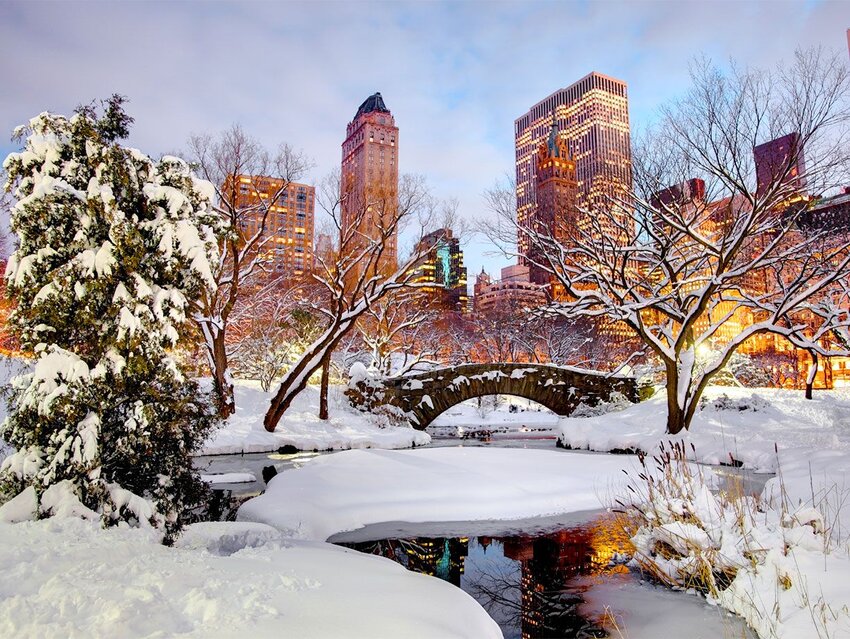From arctic blasts and snow squalls to freezing drizzle and cold snaps — there are countless ways to describe winter weather conditions. Here are seven frosty weather terms you may not know.
Thundersnow
Thunderstorms are electrical or lightning storms, usually accompanied by rain. But what happens when it’s too cold outside? Thundersnow. This rare weather phenomenon is slightly more common in the Midwest or New England. Onlookers will hear or see lightning and thunder as well as snow squalls (short bursts of heavy snow).
Black Ice
This slick layer of ice isn’t actually black. In fact, it’s clear, which makes it almost impossible to see when it's coating roads or sidewalks. When rain or drizzle quickly freezes on the ground, it can form a treacherous, transparent layer of ice. Pedestrians and drivers can easily slip or skid on black ice, making it a considerable winter weather hazard.
Nor’easter
This type of cyclonic storm can hit the entire east coast of North America, causing a whole lot of damage. In January 2018, a Nor’easter blizzard dropped two feet of snow in the Mid-Atlantic area. Technically, a Nor’easter can strike any time of year, but they’re most common (and powerful) in the winter months. The word “Nor’easter” was first used in the 1830s and came from British English. “Nor” is a shortened version of “north,” so it’s just a quicker way of saying that the winds from the storm are coming from the northeast.
Polar Vortex
Near the Earth’s poles, there are large masses of rotating cold air. If that area expands, or is disrupted, the cold air pushes down, sending blasts of icy weather to North America, Europe, and Asia. Though this term was popularized by increased media attention to extreme cold weather conditions in 2013, the polar vortex isn’t a new phenomenon. These chilly winds are constantly circulating the planet’s poles.
Lake-Effect Snow
When cold air moves over warm lake water, the moisture from the water is absorbed into the clouds causing them to produce extremely heavy snow — as much as two to three inches per hour. People who live along the Great Lakes will be most familiar with lake-effect snow (and most likely to own a very good snow shovel). But folks living near other large bodies of water such as the Great Salt Sea, Black Sea, and North Sea can also experience heavy periods of lake-effect snow — or should we say sea-effect snow?
Graupel
Unlike hail or ice pellets, graupel is a soft, frozen snow crystal that usually falls apart when touched. It forms when supercooled water droplets collect on snowflakes and shape into little white pellets. It’s a German word that means “pearl barley.” Graupel is also called “soft hail” or “corn snow.”
Whiteout
During a fierce snowstorm or blizzard, conditions might become so bad that people cannot see what’s right in front of their faces. That’s called a whiteout. Some folks think any heavy snowfall is a whiteout, but there are specific criteria. During a true whitehout, the snow, clouds, mist, or fog are so intense that the horizon disappears, and nothing can cast a shadow. Very frosty indeed.
Featured image credit: DenisTangneyJr/ iStock

